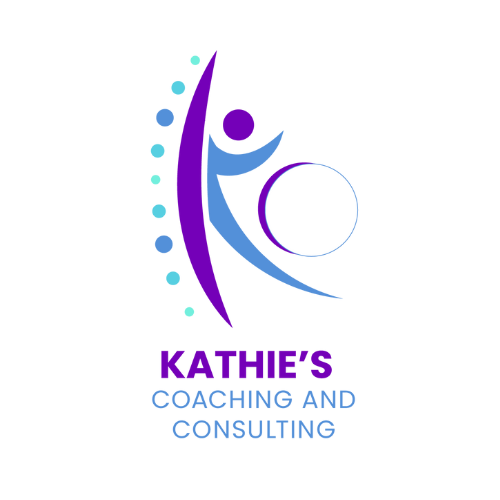The Secret Recipe for Health Fairs That Employees Actually Love
A Step-by-Step Guide for HR Professionals
Health fairs have evolved from simple check-up stations to dynamic events that can transform the wellness culture of an organization. For HR professionals and corporate wellness leaders, organizing a health fair offers a unique opportunity to engage employees in fun and meaningful ways while promoting health and well-being.
In this guide, we'll walk you through the steps to design an ultimate health fair that excites and engages your team, ensuring it caters to a wide range of interests and wellness aspects.
Step 1: Set Clear Objectives
Before diving into the logistics, it’s essential to define the purpose of your health fair. What do you want to achieve? Are you aiming to raise awareness about specific health issues, encourage healthier lifestyles, or simply provide employees with access to wellness resources?
Key Objectives to Consider:
Health Education: Provide valuable information on topics like nutrition, exercise, mental health, and preventive care.
Screenings and Assessments: Offer on-site health screenings such as blood pressure checks, cholesterol testing, and body composition analysis.
Wellness Activities: Introduce employees to new wellness activities like yoga, meditation, or fitness challenges.
Engagement and Participation: Create an event that fosters interaction and participation across all levels of the organization.
Having clear objectives will guide your planning process and help you measure the success of your health fair.
Step 2: Assemble Your Planning Team
A successful health fair is the result of collaborative effort. Assemble a planning team that includes representatives from different departments, such as HR, marketing, and facilities management. You may also want to include employees who are passionate about wellness or have specific expertise in health-related areas.
Key Roles to Fill:
Project Manager: Oversees the entire event, ensures deadlines are met, and keeps the team on track.
Vendor Coordinator: Manages relationships with vendors, schedules their participation, and ensures they have the necessary resources.
Marketing and Communications Lead: Promotes the event, designs marketing materials, and communicates details to employees.
Logistics Coordinator: Handles the setup, layout, and any logistical needs for the event.
By delegating responsibilities, you can ensure that all aspects of the health fair are covered without overwhelming any single team member.
Step 3: Choose a Theme
Selecting a theme for your health fair can make the event more cohesive and engaging. A theme helps to tie together different activities and can make the event more memorable for attendees. It can also serve as a guide for selecting vendors, activities, and marketing materials.
Theme Ideas:
Mind, Body, Spirit: Focus on holistic wellness, including mental, physical, and emotional health.
Healthy Lifestyles: Promote everyday habits that contribute to long-term health, such as diet, exercise, and stress management.
Prevention and Awareness: Center the event around preventive care and early detection of health issues.
Fitness Fiesta: Make the event fun and energetic with a focus on physical activities and fitness challenges.
Once you've selected a theme, you can start brainstorming activities and vendors that align with it.
Step 4: Select the Right Vendors and Activities
The heart of any health fair is the activities and vendors that engage employees. Your choices should reflect the diverse interests and wellness needs of your workforce. Aim for a mix of educational, interactive, and practical offerings to keep attendees interested and engaged.
Vendor and Activity Ideas:
Health Screenings: Partner with local healthcare providers to offer screenings like blood pressure checks, cholesterol testing, vision and hearing tests, and body mass index (BMI) measurements.
Fitness Demonstrations: Invite fitness instructors to lead short sessions in yoga, Pilates, or high-intensity interval training (HIIT). Consider offering these sessions throughout the day to accommodate different schedules.
Nutrition Workshops: Collaborate with dietitians or nutritionists to host workshops on healthy eating, meal prepping, or understanding food labels. You could also include cooking demonstrations and healthy snack sampling.
Mental Health Resources: Provide access to mental health professionals who can offer stress management techniques, mindfulness practices, and information on mental health support.
Wellness Challenges: Create fun challenges, such as step-count competitions or hydration challenges, with small rewards or recognition for participation.
Ergonomics and Workplace Wellness: Include sessions on proper desk setup, stretches for office workers, and tips for reducing workplace stress.
Relaxation Zones: Set up areas where employees can experience activities like chair massages, aromatherapy, or guided meditation sessions.
The key is to offer a variety of activities that appeal to different interests and fitness levels, ensuring there’s something for everyone.
Step 5: Plan the Logistics
With your theme, vendors, and activities in place, it’s time to plan the logistics of the event. This includes choosing a location, setting a date and time, and organizing the layout of the event space.
Key Considerations:
Location: Choose a venue that is easily accessible to all employees. If your organization has multiple locations or remote workers, consider hosting multiple events or offering virtual components.
Date and Time: Select a date that doesn’t conflict with major company deadlines or holidays. Consider holding the event during work hours to encourage participation.
Event Layout: Plan the layout of your event to facilitate easy flow between activities. Create distinct zones for different types of activities, such as a screening area, fitness zone, and relaxation space.
Equipment and Supplies: Make a list of all the equipment and supplies you’ll need, such as tables, chairs, audiovisual equipment, signage, and promotional materials. Confirm with vendors what they’ll bring and what you need to provide.
Step 6: Promote the Event
Promotion is crucial to the success of your health fair. The more you can generate excitement and interest beforehand, the higher the participation rate will be. Use a multi-channel approach to reach all employees.
Promotion Strategies:
Email Campaigns: Send a series of emails leading up to the event with details about the activities, vendors, and any special features. Include testimonials from past events if applicable.
Posters and Flyers: Display posters and flyers in high-traffic areas like break rooms, elevators, and restrooms.
Intranet and Social Media: Use your company’s intranet or social media platforms to create buzz about the event. Share behind-the-scenes photos, vendor spotlights, and activity highlights.
Pre-Event Activities: Host a few teaser activities or challenges in the weeks leading up to the health fair to build excitement. This could be a mini fitness challenge, a healthy recipe contest, or a wellness trivia quiz.
Step 7: Execute and Engage
On the day of the event, ensure everything runs smoothly and that your team is ready to assist vendors and attendees. Make sure all materials are set up, signage is clear, and that there are plenty of opportunities for employees to engage with the activities.
Tips for a Smooth Event Day:
Welcome Station: Set up a welcome station where employees can check in, receive event materials, and get an overview of what’s available.
Volunteer Support: Have volunteers or staff members available to answer questions, direct traffic, and assist with activities.
Feedback Collection: Set up stations or distribute surveys to collect feedback on the event. This will help you improve future health fairs.
Step 8: Follow Up
After the event, take the time to follow up with participants and vendors. Send a thank-you email to attendees, along with a survey to gather feedback. Share highlights from the event through your internal communications channels, and recognize any departments or individuals who contributed significantly.
Post-Event Actions:
Survey and Feedback: Use the feedback you collect to assess the success of the event and identify areas for improvement.
Event Recap: Share photos, videos, and a summary of the event’s highlights with all employees. This can help generate interest for future wellness initiatives.
Vendor Relationships: Maintain relationships with the vendors who participated, as they may be valuable partners for future events.
Conclusion
Organizing a health fair can be a rewarding experience that positively impacts your entire organization. By following these steps, you can design a health fair that not only excites and engages employees but also fosters a culture of wellness within your workplace.
Remember, the ultimate goal is to create an event that resonates with your team, providing them with the tools and inspiration they need to lead healthier, happier lives.
So, start planning, get creative, and make your next health fair the best one yet!
Kathie Owen, Corporate Wellness Professional since 2012 (Our Story)
About the Author: Kathie Owen is a seasoned Corporate Wellness Professional with over a decade of experience driving wellness initiatives within a rapidly growing pharmaceutical company, expanding from 5 to over 200 team members under her leadership since 2012.
With a rich background as a certified fitness trainer and life coach since 2002, Kathie combines her practical expertise in health and wellness with a deep understanding of psychological principles, thanks to her degree in Psychology.
Her holistic approach to corporate wellness not only fosters a culture of health and engagement among employees but also supports organizations in achieving their most ambitious wellness goals.
Kathie's Coaching and Consulting reflects her passion for empowering HR directors and aspiring corporate wellness leaders to create thriving workplace environments through strategic wellness programs and employee engagement.




















A leadership coach shares her personal journey of being fired for speaking up against toxic workplace culture, drawing parallels with Ted Lasso's themes of authentic leadership and courage. Her story illustrates how challenging systemic dysfunction often comes at a cost—but leads to greater freedom. #WorkplaceCulture #Leadership #TedLasso #ToxicWorkplace #CareerGrowth